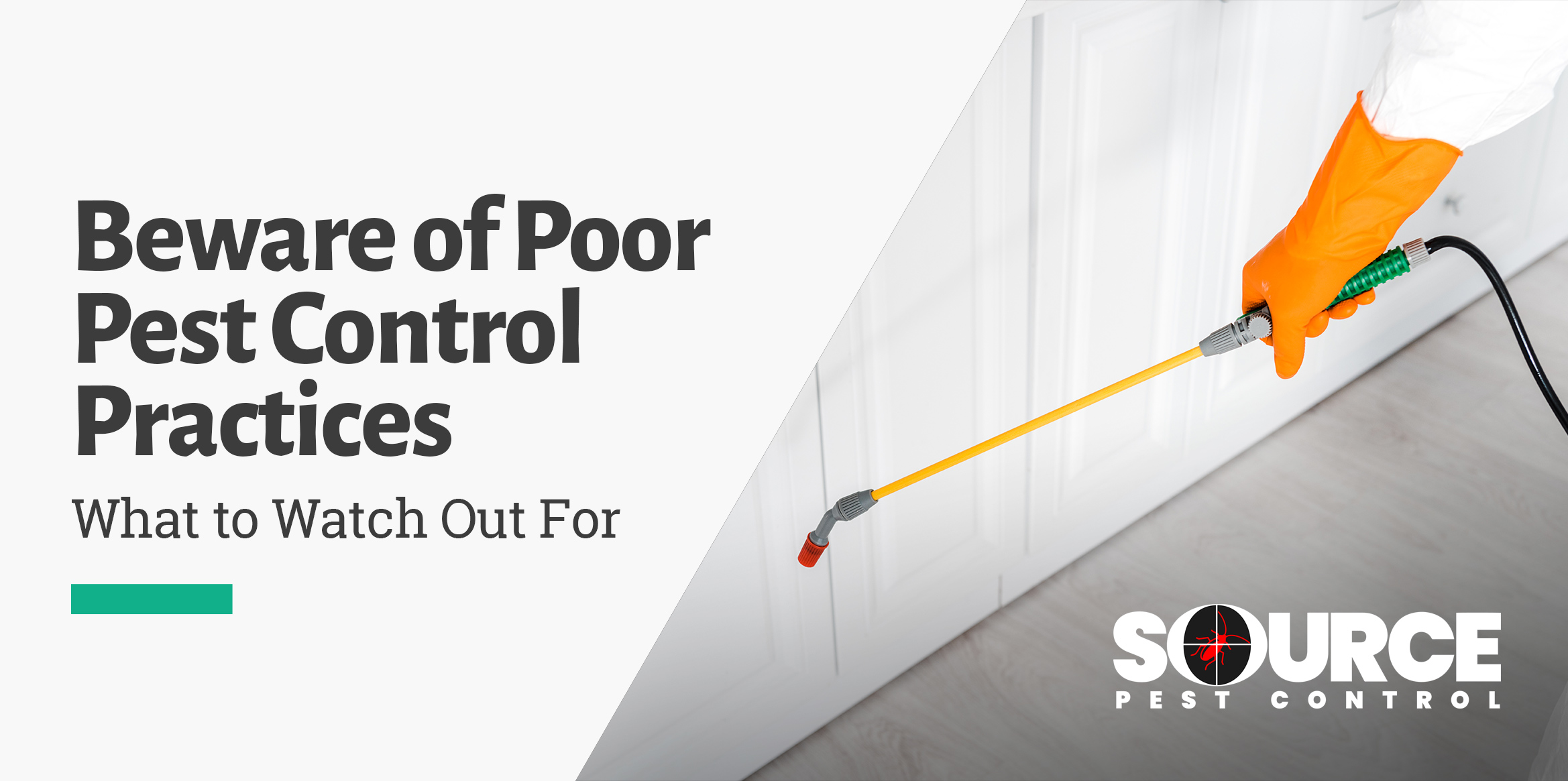Beware of Poor Pest Control Practices: What to Watch Out For
Pest control is essential to maintaining a healthy, safe environment in both homes and businesses. However, not all pest control practices are created equal. Poor pest control methods can be ineffective at best and hazardous at worst, leaving you with persistent pest problems and potential health risks. Here are some common poor pest control practices to beware of, and tips on how to avoid them.
1. Overuse of Pesticides
One of the most common mistakes in pest control is the overuse of pesticides. While pesticides are effective tools in managing pests, excessive use can lead to a range of problems:
Health Risks:
Pesticides contain chemicals that can be harmful to humans and pets when used improperly. Overapplication can lead to respiratory issues, skin irritations, and other health problems.
Environmental Impact:
Excessive pesticide use can contaminate soil, water sources, and harm beneficial insects like bees and butterflies.
Pesticide Resistance:
Overuse can cause pests to develop resistance to the chemicals, making them harder to eliminate over time.
What to Do:
Always opt for a pest control provider that uses pesticides responsibly, applying them only when necessary and in the correct amounts. Integrated Pest Management (IPM) practices, which focus on prevention and use less harmful methods, are a better alternative.
2. Failure to Identify the Root Cause
Another poor practice is treating the symptoms of a pest problem rather than addressing the root cause. Simply spraying chemicals without understanding why pests are present is a temporary fix that won’t solve the underlying issue. Common oversights include:
Ignoring Entry Points:
Pests often enter homes through cracks, gaps, or improperly sealed doors and windows. Without sealing these entry points, pests will continue to find their way inside.
Neglecting Sanitation:
Pests are attracted to food, water, and shelter. Poor sanitation, such as unclean kitchens, overflowing trash, or standing water, creates an inviting environment for pests.
What to Do:
Choose a pest control service that conducts thorough inspections and provides recommendations for preventing future infestations. This should include sealing entry points, improving sanitation, and removing attractants.
3. Using Non-Targeted Methods
Non-targeted pest control methods are those that affect more than just the intended pest. This can lead to unintended consequences, such as:
Harming Beneficial Insects:
Broad-spectrum pesticides can kill beneficial insects like pollinators, which are crucial for the ecosystem.
Disrupting Natural Predators:
By indiscriminately killing insects, you might eliminate natural predators that keep pest populations in check, leading to a secondary infestation.
What to Do:
Opt for targeted pest control methods that focus on the specific pest causing the problem. Biological control methods, like introducing natural predators or using pheromone traps, are environmentally friendly alternatives.
4. Relying on DIY Solutions Without Professional Guidance
While DIY pest control solutions can be effective for minor issues, relying solely on them without professional guidance can lead to incomplete eradication of pests or even exacerbate the problem. Common pitfalls include:
Misidentification of Pests:
Without proper knowledge, you might misidentify the pest, leading to ineffective treatment.
Improper Use of Products:
Using over-the-counter products incorrectly can be dangerous and might not address the full extent of the infestation.
What to Do:
If you’re facing a significant pest problem, it’s best to consult a professional pest control service. They can correctly identify the pest, assess the situation, and implement an effective treatment plan.
5. Lack of Ongoing Monitoring and Maintenance
Pest control is not a one-time solution; it requires ongoing monitoring and maintenance to ensure pests don’t return. Poor practices often include:
No Follow-Up:
Some pest control providers don’t offer follow-up visits to ensure that the problem has been resolved.
Ignoring Seasonal Changes:
Pest populations can vary with the seasons. Failing to adjust pest control measures accordingly can lead to recurring issues.
What to Do:
Choose a pest control service that offers ongoing monitoring and follow-up visits. Regular inspections, especially during peak pest seasons, can help catch problems early and prevent them from escalating.
Conclusion
Effective pest control is about more than just spraying chemicals; it requires a comprehensive approach that addresses the root causes, uses targeted methods, and includes ongoing maintenance. By being aware of poor pest control practices and choosing a reliable, professional service, you can protect your home or business from pests in a safe and sustainable way. Remember, the goal is not just to eliminate pests but to do so in a way that safeguards your health and the environment.




